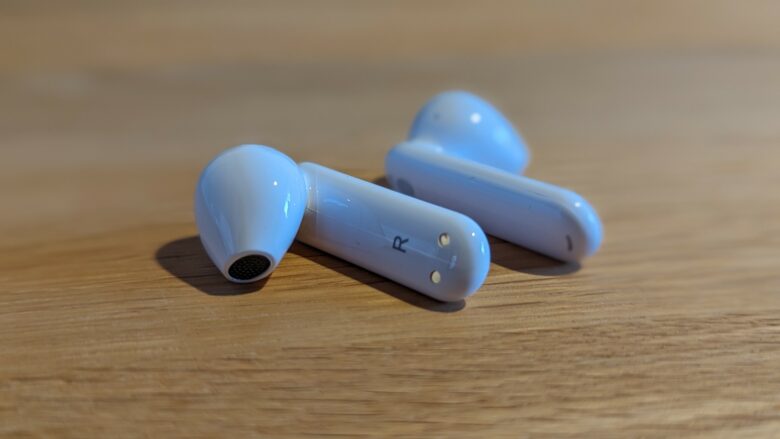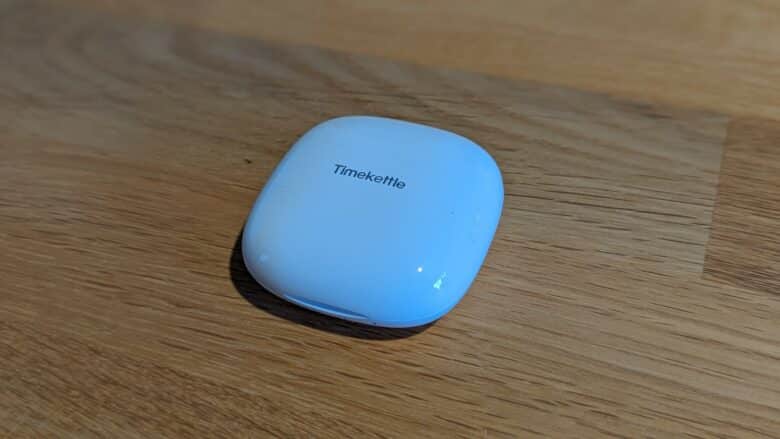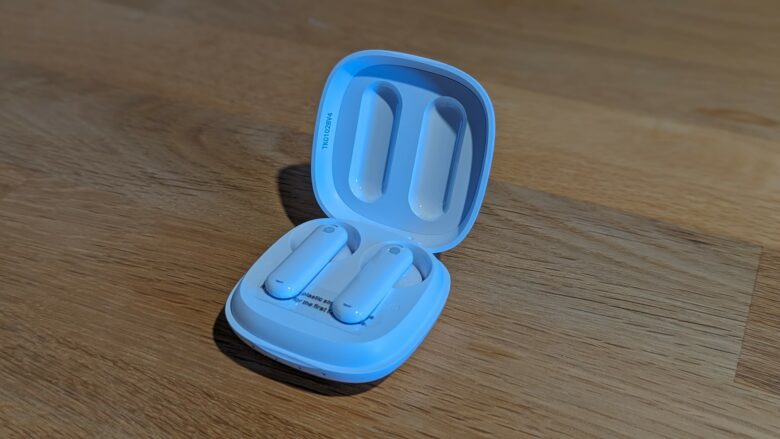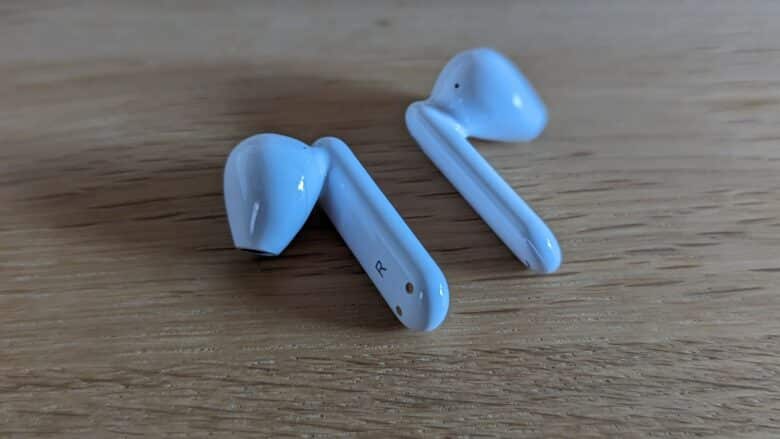
In a globalized world, we are increasingly encountering languages that we do not speak. Professional collaborations, stays abroad or presentations and conferences streamed from other parts of the world sometimes present obstacles: What if we don’t understand Japanese, Spanish or Ukrainian sufficiently and translation is not provided? Timekettle wants to offer a solution to this problem with its WT2 Edge in-ear headphones. The headphones are supposed to be able to translate spoken language almost in real time. We have tested whether this actually works.
Design and workmanship
The in-ear translation headphones are delivered in a small black box that clearly reveals what is inside. Once unpacked, a white charging box is revealed, which contains the earbuds, which are very similar to Apple’s AirPods. The headphones themselves are accordingly wireless and comparatively light. They have an average finish. The same applies to the charging box in which they are housed. They don’t really give the impression of being particularly high-quality, even if the manufacturer is obviously trying to create this by borrowing from Apple. However, this does not speak against the quality. We did not notice any processing defects.
App
To use the headphones, you need an app from the manufacturer. This can be used to adjust the headphones and choose between different translation modes – more on this later. The app is available free of charge and has a sobering effect: it is unprofessionally presented and contains translation errors. The latter point in particular is an absolute no-go for a translation product. In the test, we still managed to pair the headphones with the app and make all the relevant settings.
Translations
This brings us to the central function of the WT2 Edge from Timekettle. Four different translation modes are offered. In addition to simultaneous translation, there is a touch translation mode, a speaker mode and a list mode. It sounds like it needs a lot of explanation, but in practice it is.
Three translation modes for different purposes
In simultaneous mode, translation takes place almost in real time. This has been around for some time and is also offered by Amazon’s Alexa, for example. However, this only involves two people, each of whom must wear one of the two headsets. In practice, it is therefore clear that the WT2 Edge are not suitable for spontaneous conversations on the train or in the anteroom of a conference – after all, hardly anyone wants to give an in-ear plug to a complete stranger to continue using afterwards. Timekettle has obviously not thought about hygiene at all. The idea of constantly handing over the earphones to new people for a few minutes without being able to clean them properly is rightly anything but pleasant: there is a risk of ear infections as well as disgust.

Touch mode is initially no different from simultaneous mode. The only difference is that the headphones only start working when they are tapped. The mode is therefore particularly suitable for busy environments where there is a lot of background noise.
The speaker mode also works in a similar way. Here, however, the smartphone is integrated so that one person can use the headphones and the speakers from the smartphone. This allows conversations between more than two parties to be translated. In listening mode, on the other hand, only one person is involved, who in this case is wearing both headphones. This simply translates live what is recorded by the smartphone microphone. This mode is therefore suitable for lectures that are attended as an audience.
Translation quality in practice
We tested all modes. At first, we were pleasantly surprised: the quality of the translations is better than in the app. Our worst fears were not realized. However, the translations are not really high quality either. This is probably due to the functional principle of the in-ear headphones: they first convert the spoken language into text, which is then translated and then output again in spoken language. This means that there are several predetermined breaking points where errors can occur. And this is exactly what happens in practice. For small talk, the quality in most of the languages offered – 40 are included – is sufficient, but no more is possible. The WT2 Edge does not allow you to follow scientific lectures or more complex readings in foreign languages, as it cannot provide a sufficiently good translation. The quality is roughly on a par with the Google translator, which has also had a language input and output function for years. The text reproduction of the spoken words in the Timekettle app is also visually very similar to the Google translator.

This leads us to another problem with the Timekettle product: at a price of around 350 euros, it is quite expensive. Against the background of the rather average performance, this is not something that can be swallowed. Added to this is the fact that the headphones cannot be used for other purposes. For example, it is not possible to use them for listening to music. Ultimately, this is an incredibly expensive product that offers live translations at Google Translate level. If you want to invest 350 euros for direct voice output, you could be quite happy with it; however, if you don’t think the hurdle of opening Google Translate and pressing the voice output button is too high, you can get the same service for free.
This is especially true as the translation headphones are not able to automatically recognize the spoken language. Instead, it has to be set in advance in the app. If I don’t understand the other person and don’t know what language they are speaking, I am therefore lost with the Timekettle headphones. The Google translator is different: it can recognize and classify spoken language, albeit with some weaknesses.
During our test, we found the large number of available languages and the fact that the translation also works relatively well in noisy environments to be positive. Timekettle relies on noise-canceling technology for this.
Conclusion on the Timekettle WT2 Edge
In conclusion, it can be said that although this is a product that could certainly fill a gap in the market, the Timekettle WT2 Edge are not able to do so in practice due to their merely average quality. The manufacturer has left too many gaps and ultimately presents a product that in no way justifies a price of 350 euros. Under the current circumstances, we cannot recommend a purchase. At a significantly lower price, it would possibly be a nice gadget. Overall, however, the product is clearly inferior to other translation solutions, such as Skype’s Live Translation, which can be used free of charge.
Timekettle WT2 Edge
Design & workmanship
App
Translations
Value for money
49/100
The translation headphones are clearly overpriced, especially as the translations are not ideal and the concept is not fully thought through.






No replies yet
Neue Antworten laden...
Gehört zum Inventar
Beteilige dich an der Diskussion in der Basic Tutorials Community →